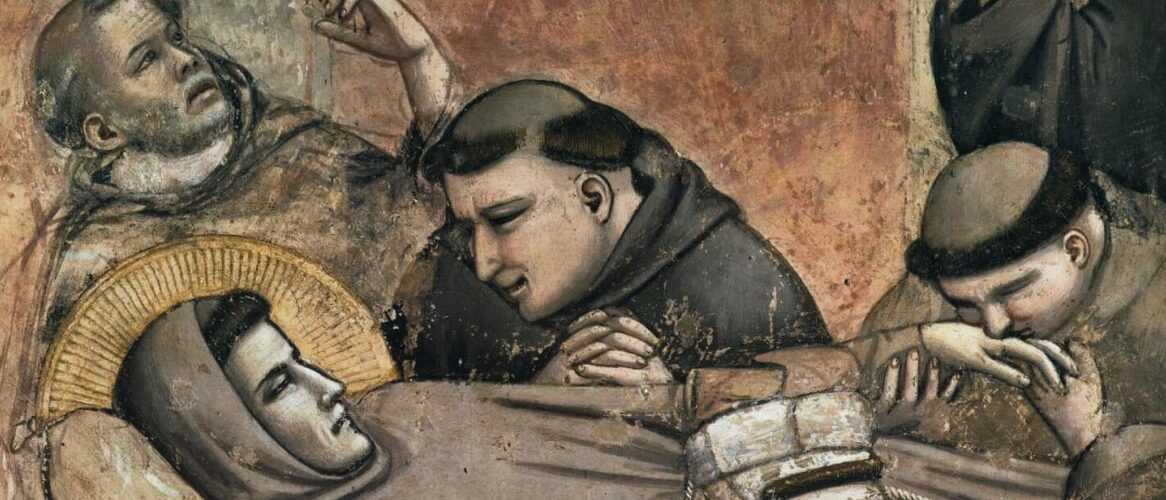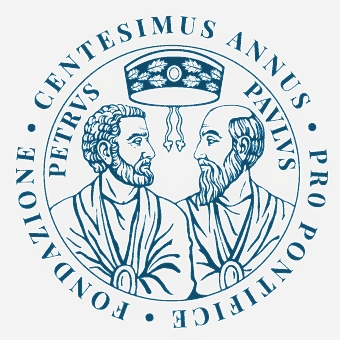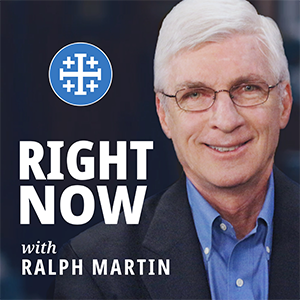This article is especially targeted towards pro-life people who want to know more about the various threats to human life in our world. As pro-life advocates who are deeply concerned about our brothers and sisters who are victims of abortion,[i] embryo destruction via assisted reproductive technologies, and euthanasia,[ii] we rightly recognize that we must use all the tools at our disposal to protect the sanctity of human life. Despite our good intentions, there are so many different manifestations of the culture of death[iii] that we sometimes fail to recognize the hidden agenda behind a particular belief. This is not a reference to conspiracy theories, but to the evident consequences that accompany certain ideas. The following three issues and ideas further the culture of death and should be recognized by the pro-life community as real threats to human life.
(1) End of life decisions that confuse ordinary and extraordinary means
In assessing when there is a duty to preserve life, the Church distinguishes between ordinary and extraordinary means.[iv] Ordinary means must be taken to preserve life, and extraordinary means can be morally refused.[v] It is, therefore, critical to properly characterize particular means of preserving human life as ordinary or extraordinary, that is, as morally obligatory or non-morally obligatory.
To further clarify, extraordinary means are “medical procedures which no longer correspond to the real situation of the patient, either because they are by now disproportionate to any expected results or because they impose an excessive burden on the patient and his family.”[vi] In contrast, ordinary means are those “means of treatment available [that] are objectively proportionate to the prospects for improvement.”[vii] There are, however, various factors that assist in the determination of what is ordinary and what is extraordinary. Such factors include: “the type of treatment to be used, its degree of complexity or risk, its cost and the possibilities of using it, and comparing these elements with the result that can be expected, taking into account the state of the sick person and his or her physical and moral resources.”[viii]
For example, a feeding tube is an ordinary means of preserving life.[ix] This is evident when the factors listed above to differentiate ordinary and extraordinary means are applied. Regarding the type of treatment to be used, a feeding tube is, strictly speaking, not medical treatment at all. It is the basic provision of natural food to which all human beings require and are entitled to by virtue of their humanity. Since a feeding tube is entirely outside the scope of medical care altogether, there is no need to apply the other elements to conclude that it is an ordinary means, but for the sake of thoroughness, the application of the remaining elements demonstrates that a feeding tube is an ordinary means of preserving life. There is nothing complex or risky about using a feeding tube. Given our health system in the United States, it may be costly, but is easy to use. The clear result is that the patient will not starve to death, which is worth all the physical and moral resources[x] a person can afford. Having concluded, then, that a feeding tube is ordinary care, the denial of a feeding tube which results in the death of a patient by starvation can be a form of euthanasia, provided that the motivation in denying the feeding tube is the relief of suffering and the person who removed the feeding tube intended the death of the patient.[xi] In any event, starving someone to death with the evident intention to kill him/her is murder.[xii]
While the distinction between ordinary and extraordinary means of preserving life can be rationally applied to any fact pattern and produce a reasonable result, there are those who argue that euthanasia—killing a patient to relieve his/her pain—is morally equivalent to letting a patient die by refusing to administer extraordinary care.[xiii] This position endangers human life because it creates confusion regarding the essential question of when there is a duty to preserve human life. This confusion can then be used to justify euthanasia. Since the death of the patient results in both cases, it is, perhaps, understandable why some have a difficult time seeing the moral distinction between euthanasia and letting die.
But a consequentialist[xiv] bioethics that looks strictly at the consequences of moral acts is incompatible with the nature of the human person. This incompatibility is evident, for example, when we look at the way courts sentence criminals for acts of killing. A criminal who premeditated killing another person and devised a careful scheme to affect his unlawful plan is likely to receive a more severe sentence than a second criminal who witnesses a provocative scene likely to inflame his emotions and then unintentionally kills someone in a furious rage, e.g., the classic example of the man who witnesses his wife committing adultery and then kills her in the heat of passion. Although death resulted in both cases, the first criminal intended to kill another person in a cool, calculated manner and acted accordingly, whereas the second criminal acted on his emotions on the spur of the moment without ever intending to kill another person. The first criminal clearly committed murder, the “unlawful killing of a human being with malice aforethought.”[xv] The second criminal probably committed the lesser crime of manslaughter, “the unlawful killing of a human being without malice or premeditation.”[xvi] Thus, the law attributes significance to intentions. Morality, too, like law, attributes significance to intentions.[xvii] Consequently, in addition to considering the obvious consequence of euthanasia and that of letting a person die by not administering extraordinary care—the death of the patient in both cases—we need to look at the intention behind euthanasia and the intention behind allowing a person to die without administering extraordinary care. However, since the intention behind an action is commingled with various other considerations, the intention should not be isolated from the overall context of an action. To analyze intentions in a meaningful way, we can apply the principle of double effect.
The moral principle of double effect provides that, in order for an action to be morally legitimate, four conditions must be satisfied:[xviii]
[1] The intended act must be good in itself [or at least morally neutral]. The intended act may not be morally evil. [2] The good effect of the act must be that which is directly intended by the one who carries out the act. The bad effect that results from the act may be foreseen by the agent but must be unintended. [3] The good effect must not be brought about by using morally evil means [i.e., the ends do not justify the means]. [4] The good effect must be of equal or greater proportion to any evil effect which would result. [If the good effect can be accomplished without the evil effect, then the evil effect is not morally permissible. In addition, to the extent that the evil effect can be mitigated while still accomplishing the good effect, such mitigation is morally required].[xix]These conditions, when applied to euthanasia—intentionally killing a patient with the motive to relieve his/her suffering—lead to the conclusion that euthanasia is not morally justified. (1) Firstly, in euthanasia, the intended act is the killing of a human being for the purpose of relieving his/her pain,[xx] a purpose which neither falls within self defense or defense of others. As the intentional killing of a human being outside of self-defense and defense of others is intrinsically evil, euthanasia is morally indefensible. For the sake of thoroughness, the remaining conditions can be applied. (2) Secondly, the good effect of euthanasia—the relief of pain—is not directly intended, but rather, this effect results from the realization of the primary intention to kill the patient. Furthermore, the bad effect of euthanasia-the death of the patient—is not simply foreseen, but intended, that is, the intent to kill the patient is necessarily an intent to cause the bad effect of the patient’s death. Therefore, euthanasia also violates the second condition. (3) Moreover, the good effect of euthanasia is brought about by an evil means, the killing of the patient.[xxi] So euthanasia also violates the third condition. (4) Finally, the good effect of relieving pain is substantially outweighed by the much greater bad effect of killing the patient. Moreover, pain killers can be administered to the patient which alleviate pain without resulting in his/her death. Thus, if the relief of pain is desired, there is no need to kill the patient. Consequently, euthanasia also violates the fourth condition of the principle of double effect. Euthanasia is then a violation of all four conditions necessary to render an action morally legitimate.
In contrast, simply letting a patient die through not administering extraordinary means fulfills all four conditions of double effect, and is, therefore, morally legitimate. (1) Firstly, the intended act in withholding extraordinary care that is either futile or would impose a burden on the patient disproportionate to any expected benefits is to ensure the comfort of the patient in his/her remaining days on earth, not to kill the patient.[xxii] In withholding extraordinary care, there is no built-in-intention[xxiii] to kill the patient because the death of the patient does not result from the withholding of medical care, but from the patient’s underlying ailment. Thus, a doctor who withholds extraordinary treatment is not causing the patient’s death. Moreover, the intended act of withholding extraordinary medical treatment is not morally evil. At worst, this action is morally neutral. Consequently, letting the patient die by withholding extraordinary care satisfies the first condition. (2) Secondly, the good effect of withholding extraordinary treatment is that the patient will be more comfortable during his/her remaining time on earth. The bad effect is that the patient may die sooner than he/she otherwise would have. Here, the good effect, the comfort of the patient, is directly intended and does not depend upon the quicker death of the patient. In addition, while the bad effect is foreseen, as the doctor who withholds extraordinary care knows that the patient will die, this bad effect is not intended. Thus, the second condition of double effect is fulfilled. (3) Thirdly, the quicker death of the patient is not, in fact, the means by which the good effect–the comfort of the patient during his/her remaining days on earth—is realized. This is clearly evidenced by the fact that the good effect, the comfort of the patient, occurs in time before the bad effect—the quicker death of the patient. Moreover, in no way is the bad effect, the quicker death of the patient, a cause of the good effect, the comfort of the patient. Thus, the bad effect, the death of the patient, is neither temporally nor causally prior to the good effect, the comfort of the patient. Therefore, the good effect—the comfort of the patient—is not brought about by using morally evil means. Accordingly, the third condition is fulfilled. (4) Finally, the good effect, the comfort of the patient—is not substantially outweighed by the bad effect, the quicker death of the patient. This is particularly true when it is considered that while human life has intrinsic value, it is but a preparation for eternal life. Furthermore, the death of the patient can only be delayed and is inevitable. Accordingly, the death that eventually does occur, albeit sooner that it would have were extraordinary care used, cannot be mitigated (delayed) without sacrificing the good effect, the comfort of the patient. The quicker death of the patient is necessary to allow the patient to spend his/her remaining days in comfort. Consequently, since the good effect is relatively proportional to the bad effect and since the bad effect is necessary and cannot be mitigated without sacrificing the good effect, the fourth condition of double effect is also satisfied. Therefore, allowing a patient to die by withholding extraordinary care satisfies all four conditions of double effect, rendering that action morally legitimate.[xxiv]
Since euthanasia, including withholding ordinary care,[xxv] is morally unjustifiable under the principle of double effect, whereas withholding extraordinary care, i.e., letting die, is morally justifiable under that same principle, it is evident that the distinction the Magisterium[xxvi] draws between ordinary and extraordinary care is not arbitrary.[xxvii] We must, therefore, not allow this teaching to be undermined by the confusion of ordinary and extraordinary care. Otherwise, such confusion can lead to the deaths of millions of our brothers and sisters by euthanasia.
(2) Acting on new theories of death, i.e., “brain death” criteria[xxviii]
Classically, death has been understood as the separation of the soul from the body. But since this separation cannot be seen, certain indications of death are necessary to properly determine whether a person is actually dead. Prior to the 1960’s, the primary criteria used to define death was the cessation of the heart and lungs, cardio-pulmonary death.[xxix] But beginning in the 1960’s, there was a shift in the medical community to diagnosing death in terms of neurological criteria, i.e., whole brain death.[xxx] This shift, however well intentioned it may have been by some involved, was at least partially “motivated by a desire to preserve more transplantable organs.”[xxxi] But even where this motivation not present, the shift to neurological criteria for determining death constitutes a formidable threat to human life.
Once the heart and lungs quit functioning, the person is certainly dead, for the heart and lungs are vital organs. The fact that there are respirators and other medical procedures that keep the vital organs functioning even after they would naturally shut down does not change the principle that cardio-pulmonary death is actual death. Pretty much everyone knows that you cannot be alive without a heartbeat. In contrast, there is not compelling evidence that “brain death” is actual death. Patients who are “brain dead” have been able to “process oxygen from the lungs into the bloodstream, maintain a normal body temperature, digest food and expel waste, grow to normal adult size from the age of four to twenty, and even carry a child to term.”[xxxii] Dr. Paul Byrne, a neonatologist and clinical professor of pediatrics at the University of Toledo states, “The issue of ‘brain death’ was invented to get beating hearts for transplantation. And there is no way that this can go on. It must get stopped.”[xxxiii]
This lack of certainty over whether “brain death” is really death has significant moral implications. It must first be observed that organ transplantation of a vital organ is not morally legitimate unless the person donating the organ is already dead. As Pope Benedict stated, “[I]ndividual vital organs cannot be extracted except ex cadavere [from a dead body].”[xxxiv] Or again, “the principle criteria of respect for the life of the donator must always prevail so that the extraction of organs be performed only in the case of his/her true death.”[xxxv] Otherwise, medical staff would be killing patients to harvest their organs, which is clearly murder. Thus, if there is doubt as to whether “brain death” is really death, it is imprudent and immoral to continue applying “brain death” criteria to determine death. No vital organ such as the heart or lungs could be morally extracted from a person who is “brain dead,” that is, potentially alive. If the organ could not be donated once the person dies, that organ should not be donated at all. This result is mandated by the moral principle of precaution. As Pope Benedict explained, “In an area such as this [determining when a person is actually dead], in fact, there cannot be the slightest suspicion of arbitration and where certainty has not been attained the principle of precaution must prevail.”[xxxvi] Precaution must prevail in organ donation in the same way that a hunter who is unsure whether what he intends to shoot is a deer or a person should restrain himself from pulling the trigger. In like manner, medical staff should not extract organs from people who are not definitively dead, for human life is too precious to take such risks.
There is, indeed, serious doubt that “brain death” is actual death. In fact, there is compelling evidence that “brain death” is not actual death.[xxxvii] Consequently, there is a moral need for society to understand that cardio-pulmonary death and “brain death” are not equally certain means of determining death. The latter is a novel theory that is unproven. The “brain death” criteria which is said to accurately determine true death derives from a document entitled: “A Definition of Irreversible Coma: Report of the Ad Hoc Committee of the Harvard Medical School to Examine the Definition of Brain Death.” The Report openly admits that there are two reasons for redefining death as “irreversible coma” or “brain death.” The first reason is to lessen the burden on “patients who suffer permanent loss of intellect, on their families, on the hospitals, and on those in need of hospital beds already occupied by these comatose patients.”[xxxviii] The second reason is because “obsolete criteria for the definition of death can lead to controversy in obtaining organs for transplantation.”[xxxix] Notice that neither one of these reasons has anything to do with protecting the lives of those who are in an “irreversible coma.” Rather, the reasons given are utilitarian, pragmatic reasons. This in itself suggests that we should be cautious in accepting the criteria enumerated in the report.[xl]
Even within the Catholic Church, there is widespread confusion over the reliability of “brain death” criteria in determining actual death. While the Holy See has not officially taken a position on whether “brain death” is actual death, a message given by Pope John Paul II is often misinterpreted as an approval of “brain death.” In an address to the 18th International Congress of the Transplantation Society, the Holy Father said:
Here it can be said that the criterion adopted in more recent times for ascertaining the fact of death, namely the complete and irreversible cessation of all brain activity, if rigorously applied, does not seem to conflict with the essential elements of a sound anthropology. Therefore a health-worker professionally responsible for ascertaining death can use these criteria in each individual case as the basis for arriving at that degree of assurance in ethical judgement which moral teaching describes as ‘moral certainty.’[xli]
There are a few basic reasons why this statement does not approve the use of “brain death” criteria. Firstly, the Holy Father never said that it was prudent to use “brain death” criteria as a means of determining death. What he did say was that if brain death criteria were “rigorously applied,” this would not “seem to conflict” with a sound anthropology of the human person. So even if brain death criteria are “rigorously applied,” which is not the case,[xlii] Pope John Paul II never stated that there is, in fact, no conflict between brain death criteria and a sound anthropology of the human person. He merely observed the seeming absence of this conflict if the accuracy of brain death criteria in determining actual death is assumed.[xliii] This statement, therefore, does not change the fact that in dealing with the issue of when a human person is dead, the principle of precaution must prevail. Thus, if there is any doubt whatsoever about the accuracy of “brain death” criteria in predicting actual death, these criteria should not be used.
There are, indeed, several reasons to reject brain death criteria as an accurate means of determining death. Pope Benedict XVI has hinted that he is not convinced by the Harvard Report. He has explained, “Those whom illness or accident cause to fall into an ‘irreversible’ coma will frequently be put to death to answer the demand for organ transplants or they will even be used for medical experiments (‘warm cadavers’).” Given that the word “irreversible” is in quotes, the implication is that the “irreversible coma” proposed by the Ad Hoc Committee of Harvard Medical School is not irreversible. But even if a coma was irreversible, it does not follow that the person in such a coma is already dead. In fact, only people who are alive can be in a coma, and it is impossible to be in a coma and dead at the same time.[xliv]
While it is possible that Pope Benedict was referring to the abuse of “brain death” criteria rather than the mere use of “brain death” criteria to determine death, there are significant reasons for believing that the very use of “brain death” criteria creates an unacceptable risk that living people will be declared “brain dead” and have their organs harvested for transplants. Firstly, pregnant women who have been declared “brain dead” have produced breast milk. Since the “production of breast milk stems from the pituitary gland in the brain,”[xlv] it is clear that the pituitary gland is functioning in pregnant women declared “brain dead.” This suggests that current technology is unable to fully detect all brain activity, or that certain brain functions detected are marginalized or ignored.[xlvi] Consequently, even if the complete absence of brain activity does theoretically result in death, the current use of “brain death” criteria does not ensure the complete absence of brain activity. Secondly, if “brain death” is actual death, why are “brain dead” people who are about to have their organs extracted given “intravenous fluids, intravenous feeding, blood transfusion, thyroid hormone, adrenal hormones,” and a “paralyzing agent” which is used to “stop the donor from moving during the extraction of organs?”[xlvii] It is evident that if a person were truly dead, none of this would be necessary. Thirdly, the very theory behind brain death, i.e., that the brain controls the body such that the complete loss of brain activity renders a person dead, is inconsistent with what we know about the beginning of human life. This is well explained by Josef Siefert, a world-renowned philosopher:
‘During the first six weeks of pregnancy our body lives without a functioning brain and hence our human life does not begin with the human brain. Certainly, the embryo is alive, but his life is not bound to the functioning of his brain. Therefore, the thesis of ‘brain death’ being the actual death of the person which ties human life inseparably to a functioning brain goes against this biological fact: The development of the embryonic body proves that the brain cannot be simply the seat of the human person’s life or soul. To hold the opposite view, you have to defend the position that the human soul is created or enters the body only after the human brain is formed.’[xlviii]
Essentially, the theoretical argument against brain death is very simple. If the brain is not necessary for the life of the embryo just conceived and human life is a continuum from conception until natural death, why should the brain be essential for any human life at any point in the continuum between conception and natural death?
But despite the significant evidence demonstrating that “brain death” is not true death, there are those who desperately want the Holy See to accept “brain death” criteria as a legitimate means of determining death and allowing organ transplants. There may be many motives fueling this agenda, but at the very least, the “billion dollar business of organ transplantation”[xlix] provides a monetary incentive that can easily hinder the search for truth given our fallen human nature.
For instance, the Pontifical Academy of Sciences organized two meetings to discuss “brain death” criteria and organ transplantation in 1985 and 1989.[l] The majority of participants supported the Harvard Criteria, i.e., agreed that “brain death” is actual death.[li] Then in 2004, Pope John Paul II prudently wanted to revisit the issue of “brain death.”[lii] Accordingly, the Pontifical Academy of Sciences was involved in the organization of a conference. The Pontifical Academy of Sciences then submitted a list of potential presenters that included many people who did not support the Church’s social teaching, that is, the social teaching of the Magisterium.[liii] There were even doctors suggested that were “actively transplanting organs.”[liv] Clearly, this presented a conflict of interest that should have been avoided. Nevertheless, at the end of the conference, “a majority of the participants concluded that ‘brain death’ is not true death.”[lv] Thus, “as long as the heart is beating, the donor is alive and his soul has not departed from the body.”[lvi] The papers of the participants—the majority of which rejected the use of brain death criteria—were to be published.[lvii] Unfortunately, “‘higher authorities’ within the Vatican” decided not to publish the papers.[lviii] Thankfully, the presenters who rejected the use of “brain death” criteria as an accurate means of determining death decided to publish the papers themselves.[lix] The result is a book entitled, “FINIS VITAE: Brain Death is NOT True Death.”[lx]
In the light of the preceding discussion, the pro-life community must work within society and the Church to advance the message that because “brain death” is not actual death, the use of “brain death” criteria to determine death is a threat to human life that can result in murder and the commercialization of the human body for purposes of organ transplantation.
(3) Redefining the beginning of human life—from conception (fertilization) to implantation or viability
In addition to the use of new criteria for determining death, there is a very dangerous attempt to redefine the beginning of human life. The medical/scientific field of embryology provides compelling evidence that human life begins at conception.[lxi] Another equally valid description of the beginning of human life is the following: “It is quite clear that what was known more than 100 years ago, even intuitively before that, is that the fusion of sperm and oocyte [egg] begins the life of the new individual human being.”[lxii]
Given that science clearly validates conception or fertilization as the beginning of human life, any attempt to redefine the beginning of human life at a point beyond conception threatens human beings newly conceived. One attempt at redefining the beginning of human life is to change the definition of “conception.” Conception actually refers to the union of sperm and ovum, that is, when the sperm fertilizes the egg.[lxiii] But some now use the term “conception” to refer to the implantation of the embryo, also referred to as a blastocyst, in the uterine wall. This dramatic change of the word “conception” can be found in standard medical reference books.[lxiv] Or alternatively, instead of redefining conception to mean implantation, some will simply argue that implantation is the beginning of human life.[lxv] The American Congress of Obstetricians and Gynecologists (ACOG) appears to have taken this latter approach in one of their ethics opinions.[lxvi] Yet again, a third argument used to change the beginning of human life is to exaggerate the significance of “viability,” that is, the point at which the fetus could have a chance of survival if born prematurely. This approach was taken in Roe v. Wade, the Supreme Court decision that legalized abortion in all 50 states. The Court in Roe stated, “With respect to the State’s important and legitimate interest in potential life, the ‘compelling’ point is at viability. This is so because the fetus then presumably has the capability of meaningful life outside the mother’s womb.”[lxvii] Thus, under Roe, the state has, in principle, no right to proscribe abortion before viability.[lxviii]
All of these attempts at redefining the beginning of human life have profound moral consequences. If implantation, for example, is the beginning of human life rather than fertilization (conception), in vitro fertilization cannot be objected to on the ground that it results in the killing of human beings. Consequently, all the human embryos created in a lab through in vitro fertilization, that is, conception outside the womb, are not human beings and can be destroyed, frozen, and used for medical experiments. The mere fact that these embryos are not implanted in the mother’s womb renders them subject to such abuses. In addition, contraceptives which act as abortifacients by preventing the embryo from attaching in the uterine wall can no longer be objected to on the grounds that they kill human beings. Thus, abortion is disguised as contraception. Or in the case of the theory of viability as the beginning of human life, all abortions which happen after conception (fertilization) but before viability—approximately 24 weeks—cannot be condemned as the destruction of innocent human life.
It is this exploitation of the human embryo that lies behind phrases such as “preembryo”[lxix] and “potential life.” These terms are derivative of theories which deny that conception is the beginning of human life. This is plainly evident by the very terms themselves. Either there is an embryo or there is not,[lxx] so it is illogical to use the term “preembryo” as if certain embryos embodied the nature of embryos more fully than other embryos. Similarly, either human life is present, or it is not. Consequently, it is unreasonable to use the term “potential life,” as if a 9-month fetus is any more human than an embryo just conceived. The operative question is not whether human life could be created, but rather it already exists. By charitably challenging the use of such terms as “preembryo” and “potential life,” we will direct the minds and hearts of our brothers and sisters back to the essential question of when human life begins. This is the essential question because once it is determined that the zygote or the embryo is human from the moment of conception, that zygote or embryo is worthy of protection by the mere fact of his/her humanity. This is clearly what it means to affirm the “inherent dignity” and the “equal and inalienable rights of all members of the human family.”[lxxi]
End Notes
[1] Abortion refers to the intended death of an unborn child, an embryo or a fetus, depending on the stage of development; [2] Euthanasia refers to the intentional killing of a patient with the motive to relieve that patient’s suffering. This killing can occur through an act or omission. Cf. Pope John Paul II, Evangelium Vitae, § 65. [3] Cf. Pope John Paul II, Evangelium Vitae, §12 (1995); [4] Pope Pius XII, Address to an International Congress of Anesthesiologists (24 November 1957). Also, sometimes the distinction between ordinary and extraordinary means is discussed in terms of proportionate and disproportionate means; [5] Id.; [6]Pope John Paul II, Evangelium Vitae, § 65; [7] Id.;[8] Sacred Congregation for the Doctrine of the Faith, Declaration on Euthanasia, IV. Due Proportion in the Use of Remedies (5 May 1980); [9] “One must always provide ordinary care (including artificial nutrition and hydration), palliative treatment, especially the proper therapy for pain, in a dialogue with the patient which keeps him informed.” Pontifical Academy for Life, Respect for the Dignity of the Dying, § 6 (9 December 2000). Again, “The administration of food and water even by artificial means is, in principle, an ordinary and proportionate means of preserving life.” Sacred Congregation for the Doctrine of the Faith, Responses to Certain Questions Concerning Artificial Nutrition and Hydration (1 August 2007); [10] By moral resources, I am referring to a person’s virtues and positive attitude in the face of difficulties; [11] Any reasonable person knows that removing a feeding tube from a patient will lead to his/her death; [12] The qualification of the above analysis is that a feeding tube is morally obligatory so long as “it is shown to accomplish its proper finality, which is the hydration and nourishment of the patient.” Sacred Congregation for the Doctrine of the Faith, Responses to Certain Questions Concerning Artificial Nutrition and Hydration (1 August 2007). There are, then, conceivable situations when a feeding tube would not be ordinary care, but this is an exception to the principle that a feeding tube is ordinary care; [13] In fact, the withholding of extraordinary treatment, that is, letting the patient die, is sometimes referred to as “passive euthanasia.” Cf. Freedom and dignity: in life and in death (18 Jan. 2011), available at http://synapses.co.za/freedom-dignity-life-death/ (last visited 14 October 2019); [14] Theview of consequentialism “holds that whether an act is morally right depends only on the consequences of that act or of something related to that act, such as the motive behind the act or a general rule requiring acts of the same kind.” Sinnott-Armstrong, Walter, Consequentialism, The Stanford Encyclopedia of Philosophy (Fall 2008 Edition), Edward N. Zalta (ed.), available at http://plato.stanford.edu/archives/fall2008/entries/consequentialism/ (last visited 14 October 2019); [15]Murder, available at http://legal-dictionary.thefreedictionary.com/murder (last visited 14 October 2019); [16] Manslaughter, available at http://www.lectlaw.com/def2/m013.htm (last visited 14 October 2019); [17] If intentions had no moral implications, a deep examination of conscience that seeks to determine the true intentions behind certain behaviors would not be spiritually beneficial. We know from experience, however, that a deep examination of conscience is spiritually beneficial in part because it helps to illuminate our true intentions; [18] All four conditions must be satisfied for an action to be moral; [19] Cf. Catholic Dictionary, DOUBLE EFFECT, available at https://www.catholicculture.org/culture/library/dictionary/index.cfm?id=33215 (last visited 14 October 2019); [20] But despite the evident intention of the person who euthanizes the patient, many in society will defend the killing on the ground that the intention was not to kill the patient, but to end the victim’s suffering. This, however, is a false and misleading claim that confuses intention and motive. Intent refers to what a person contemplates doing, whereas motive refers to why they are doing it or the purpose for which they are doing it. The motive of the person who performs the lethal injection is to relieve the painof the patient, but the obvious intention behind the lethal injection and the only possible ensuing result is the death of the victim. The intent to kill is built-in to the very act of euthanasia; [21] This killing occurs outside the parameters of self-defense and defense of others, so it is unjustified and intrinsically evil; [22] Cf. Will Cartwright, Killing and letting die: a defensible distinction, British Medical Bulletin; 1996; 52 (No. 2), available at http://bmb.oxfordjournals.org/content/52/2/354.full.pdf (last visited 14 October 2019); [23] By the phrase “built-in intention,” I am referring to an intent that is clearly evident when simply looking at the action itself, that is, the intent is “built-in” to the action itself; [24] In contrast, withholding ordinary care, which there is a duty to provide, is morally equivalent to euthanasia. In the case of a feeding tube, it is precisely the withholding of the feeding tube that results in the death of thepatient by starvation, instead of the patient dying as a result of their preexisting ailment. Thus, the withdrawal of a feeding tube, in contrast to extraordinary care, causes the death of the patient; [25] Withholding ordinary care is euthanasia by omission; [26] The teaching office of the Catholic Church exercised by the Pope, the successor of St. Peter, throughout history, by virtue of the privilege handed down to him by Jesus in Matthew 16:18-19; [27] The teaching of Pope Pius XII on the administration of pain medicine should also be carefully distinguished from euthanasia. Specifically, the administration of pain medicine which is intended to relieve pain but has the incidental effect of shortening death is, in principle, morally licit provided there is no “direct causal bond” between the administration of the pain medicine and the death of the person receiving the medicine. Cf. Pope Pius XII, Allocution to Doctors on the Moral Problems of Analgesia (24 February 1957), available at http://feamc.eu/wp-content/uploads/2018/06/pius12-feb1957.pdf (last visited 14 October 2019); [28]“The neurological impairment to which the terms ‘brain death syndrome’ and ‘irreversible coma’ have become attached indicates diffuse disease. Function is abolished at cerebral, brain-stem, and often spinal levels. This should be evident in all cases from clinical examination alone.” A Definition of Irreversible Coma: Report of the Ad Hoc Committee of the Harvard Medical School to Examine the Definition of Brain Death. The four characteristics of “irreversible coma” or “brain death” are (1) unreceptivity and unresponsitivity, (2) no movements or breathing, (3) no reflexes, (4) flat electroencephalogram (EEG). Id.; [29] E. Christian Brugger, “’Organ Donation Euthanasia’: A Dangerous Proposal,” available at http://www.freerepublic.com/focus/f-news/2524261/posts (last visited 14 October 2019); [30] Id.; [31] Id.;[32] Hilary White (Rome Correspondent), “‘Brain Death’ is Life, Not Death: Neurologists, Philosophers, Neonatologists, Jurists, and Bioethici,” available at https://www.lifesitenews.com/news/brain-death-is-life-not-death-neurologists-philosophers-neonatologists-juri (last visited 14 October 2019); [33] Id.;[34] Benedict XVI, Address to Participants at an International Congress Organized by the Pontifical Academy for Life” (7 November 2008); [35] Id.; [36] Id.;[37] Cf. Mercedes Arzu Wilson, Save the Brain Dead Victims, available at http://www.lifeissues.net/writers/wils/wils_03braindeath.html (last visited 14 October 2019); [38] A Definition of Irreversible Coma: Report of the Ad Hoc Committee of the Harvard Medical School to Examine the Definition of Brain Death; [39] Id.;[40]“Missing from the Harvard Committee’s report were the most basic scientific studies, patient data, and references, as well as the numerous objections from honest, conscientious physicians who participated in the committee and strongly objected to the definition of “brain death” as true death. In other words, there was serious lack of scientific method in the origination and later development of the brain-related criteria.” Mercedes Arzu Wilson, supra note 37;[41] Address Of The Holy Father John Paul II To The 18th International Congress Of The Transplantation Society (29 August 2000); [42] Mercedes Arzu Wilson, supra note 37; [43] Pope JohnPaul II also stated, “[T]he Church does not make technical decisions. She limits herself to the Gospel duty of comparing the data offered by medical science with the Christian understanding of the unity of the person, bringing out the similarities and the possible conflicts capable of endangering respect for human dignity.” Address of the Holy Father John Paul II To The 18th International Congress of the Transplantation Society (29 August 2000). Thus, it is obvious that Pope John Paul II never meant to definitively affirm that using “brain death” criteria is an accurate means of determining death; [44]Mercedes Arzu Wilson, supra note 37;[45] Id.; [46] Id.; [47] Id.;[48] Id.;[49] Id.;[50] Id.;[51] Id.;[52] Id.; [53] Id.; [54] Id.;[55] Id.; [56] Id.;[57] Id.;[58] Id.;[59] Id.;[60] Id.;[61]Physicians for Life, Fertilization/Implantation: A Scientific View of When Life Begins, available at http://www.physiciansforlife.org/a-scientific-view-of-when-life-begins/ (last visited 14 October 2019); [62] When does human life begin? The Final Answer: A human embryologist speaks out about socio-legal issues involving the human embryo, available at http://www.lifeissues.net/writers/kisc/kisc_04whenlifebegins2.html#a7 (last visited 14 October 2019);[63] Id.;[64] Cecilia M. Cody, Conception/Fertilization-What’s the Difference?, available at http://www.calright2life.org/difference.htm (last visited 14 October 2019); [65] Although incorrect, atleast this argument does not confuse people by redefining a commonly used term—conception. The clear scientific evidence that human life does not begin at implantation is that even prior to implantation, thereare days of “regular and ordered development” preparing the embryo for implantation. Cf. Patrick Lee and Robert P. George, The First Fourteen Days of Human Life, The New Atlantis, No. 13, 61-67 (Summer 2006); [66] ACOG Committee Opinion, Using Preimplantation Embryos for Research, No. 347 (Nov. 2006). I say that the ACOG “appears” to believe that human life begins at implantation, or at least that human life is more worthy of respect from implantation, because they conveniently refuse to pinpoint the exact beginning of human life, despite the fact that the ACOG’s opinion is 13 pages long; [67] Roe v. Wade, 410 U.S. 113, 163 (1973); [68] Id., 164-65. I use the qualification “in principle” because even after viability, abortions are permissible for the “health” of the woman. In practice, this means that abortion is legal all nine months of pregnancy; [69] For the history of the term “preembryo,” Cf. When Does Human Life Begin? The Final Answer, supra note 64; [70] The principle of non-contradiction is applied here, that is, the principle that a thing or living entity cannot both be and not be at the same time; [71] The Universal Declaration of Human Rights (adopted by United Nations General Assembly 10 December 1948), available at http://www.un.org/en/documents/udhr/index.shtml (last visited 14 October 2019).
























